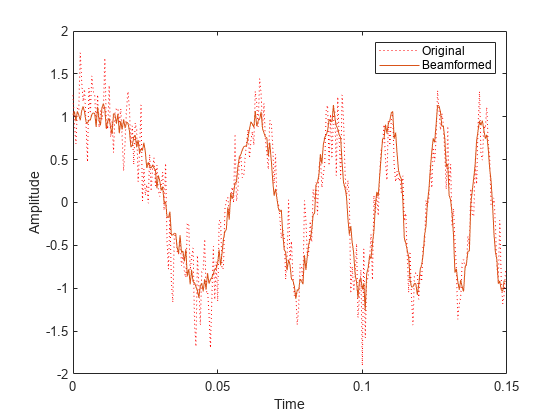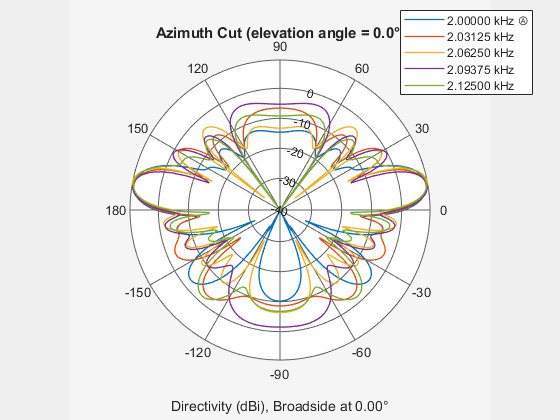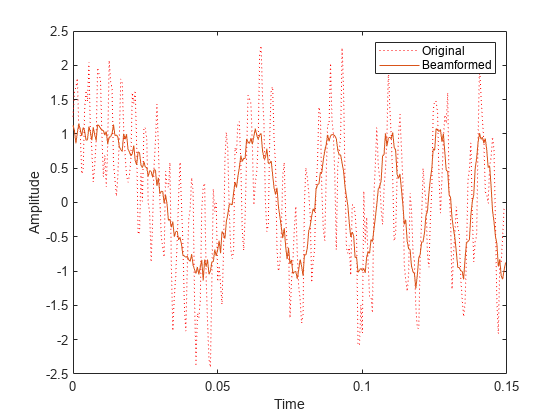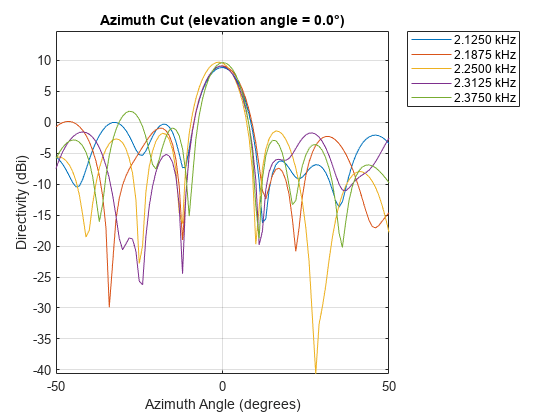phased.SubbandMVDRBeamformer
Wideband minimum-variance distortionless-response beamformer
Description
The phased.SubbandMVDRBeamformer
System object™ implements a wideband minimum variance distortionless response beamformer (MVDR)
based on the subband processing technique. This type of beamformer is also called a Capon
beamformer.
To beamform signals arriving at an array:
Create the
phased.SubbandMVDRBeamformerobject and set its properties.Call the object with arguments, as if it were a function.
To learn more about how System objects work, see What Are System Objects?
Creation
Syntax
Description
beamformer = phased.SubbandMVDRBeamformerbeamformer. The object performs subband MVDR
beamforming on the received signal.
beamformer = phased.SubbandMVDRBeamformer(Name,Value)beamformer, with each specified property
Name set to the specified Value. You can specify
additional name-value pair arguments in any order as
Name1,Value1,...,NameN,ValueN.
Example: beamformer =
phased.SubbandMVDRBeamformer('SensorArray',phased.URA('Size',[5
5]),'OperatingFrequency',500e6) sets the sensor array to a 5-by-5 uniform
rectangular array (URA) with all other default URA property values. The beamformer has an
operating frequency of 500 MHz.
Properties
Usage
Syntax
Description
Y = beamformer(X,ANG)ANG as the beamforming direction. This syntax applies when you
set the DirectionSource property to 'Input port'.
[
returns the beamforming weights, Y,W]
= beamformer(___)W. This syntax applies when you set
the WeightsOutputPort property to true.
[
returns the center frequencies of the subbands, Y,FREQS] = beamformer(___)FREQS. This syntax
applies when you set the SubbandsOutputPort property to true.
You can combine optional input arguments when you set their enabling properties.
Optional input arguments must be listed in the same order as their enabling properties.
For example,
[
is valid when you specify TrainingInputPort as Y,W,FREQS]
= beamformer(X,XT,ANG)true and set DirectionSource to 'Input port'.
Input Arguments
Output Arguments
Object Functions
To use an object function, specify the
System object as the first input argument. For
example, to release system resources of a System object named obj, use
this syntax:
release(obj)
Examples
More About
Algorithms
References
[1] Van Trees, H. Optimum Array Processing. New York: Wiley-Interscience, 2002.
Extended Capabilities
Version History
Introduced in R2015b



